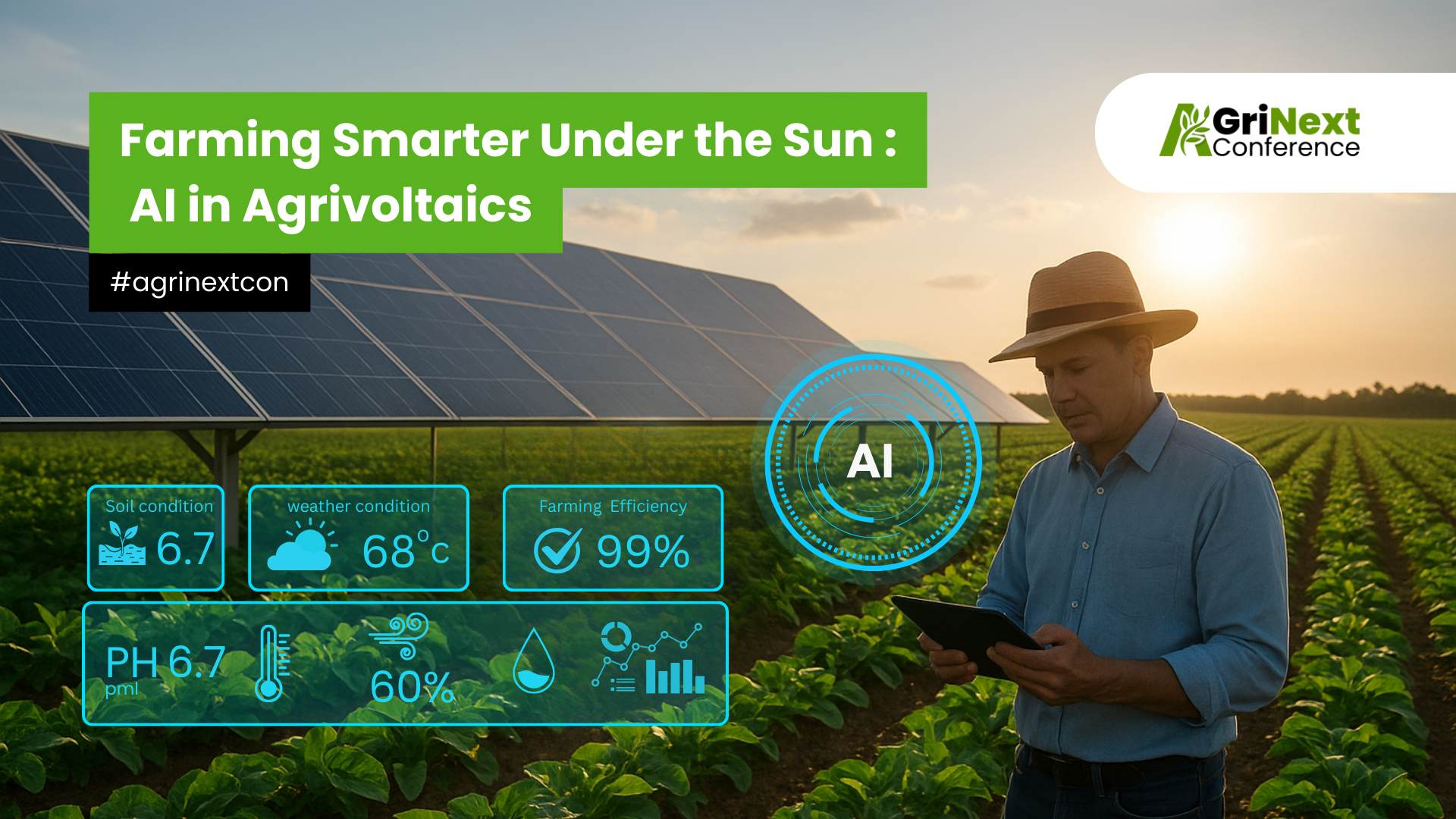
Where artificial intelligence meets agrivoltaics to grow more food and clean energy.
As the world grapples with mounting food and energy demands, agrivoltaics—the co-location of agriculture and solar panels on the same plot—has emerged as a pioneering solution for sustainable land use. The recent integration of artificial intelligence (AI) and machine learning has supercharged this innovation, allowing us to farm smarter—maximizing crop yields and renewable energy production while using land and resources more efficiently than ever before.
Optimizing Panel Placement and Dynamic Management
AI is revolutionizing agrivoltaics by optimizing every facet of the system. Advanced algorithms analyze massive real-time datasets—weather patterns, solar irradiance, soil moisture, plant health, and more—to determine the ideal panel placement, spacing, and tilt angles. This ensures maximum sunlight capture for electricity generation without unduly shading crops, fostering growth conditions tailored to specific plant species and climates. Dynamic shading systems, controlled by AI, further adapt panel movement to daily and seasonal variations in sunlight, delivering just the right amount of shade to crops at all times.
Precision Farming and Predictive Intelligence
AI-driven agrivoltaic systems continuously monitor crops and the surrounding environment using IoT sensors, drones, and camera footage. Machine learning models process this information to detect crop stress, disease, or irrigation needs early. Predictive analytics allow farmers to anticipate weather impacts, shifts in energy demand, and the best windows for planting or harvesting. For example, historical data and real-time inputs are combined to generate accurate forecasts for both crop yields and solar output, empowering proactive adjustments that reduce waste and boost efficiency. A recent review of agrivoltaics in the Himalayan and Gangetic Plains highlights how AI-driven monitoring can further improve water savings by 20–30% and boost farmer incomes by up to 40%, while also creating microhabitats that support biodiversity.
Case Study: India’s AI-Powered Agrivoltaics Pilot
A pioneering project in Maharashtra, India, has shown how AI can transform agrivoltaics at scale. Farmers growing onions and leafy vegetables under solar panels used AI models to dynamically adjust panel tilt angles. The result? A 15% increase in crop yield compared to open-field cultivation, while simultaneously generating enough electricity to power local irrigation pumps. The AI system also forecasted soil moisture needs, cutting water usage by nearly 30%.
Beyond this, a 1.4 MW agrivoltaic project in Parbhani, Maharashtra, has been operating successfully for more than 18 months, demonstrating how crops and energy production can coexist. Similarly, a 7.2 kWp system at Junagadh Agricultural University in Gujarat achieved an efficiency of 80.8% and generated over 10,000 kWh of clean energy during the study period .
Synergy With Smart Grids and Urban Agriculture
Not only does AI optimise individual farms, but it also enables agrivoltaic installations to synchronise energy production with local grids, delivering surplus solar power where demand is highest. In urban environments, rooftop agrivoltaics managed by AI create food and energy “microgrids,” promoting local resilience and sustainability while reducing the urban heat island effect and food transportation emissions. According to the National Solar Energy Federation of India (NSEFI), over 22 agrivoltaic projects are already operational across the country, with many linked to local grids to supply surplus power.
Autonomous Robotics and Advanced Materials
The future of AI in agrivoltaics also features autonomous robots for soil monitoring, harvesting, and panel cleaning—lowering labor costs and enhancing productivity. AI-assisted materials research is leading to new kinds of solar panels, such as semi-transparent or adaptive panels, which can adjust their light transmission properties for optimal conditions throughout the day.
Climate Impact and Societal Benefits
By maximizing both agricultural output and green energy production, AI-powered agrivoltaics helps tackle climate change—reducing carbon emissions and promoting regenerative farming practices like intercropping and improved soil management. In developing regions, these smart systems can be deployed in high-sunlight environments to address both food security and energy access. Earlier solar–agriculture projects in India have already converted barren lands into productive zones, such as in Gujarat where tomatoes are grown beneath solar panels while electricity is fed into nearby grids . Policy-makers and organizations like the International Renewable Energy Agency (IRENA) are increasingly supporting these innovations as part of global sustainability goals.
Challenges and Outlook
Scaling AI-powered agrivoltaics globally will require further policy support, cost reductions, and widespread farmer education. However, its potential to reshape the food and energy landscape is immense—bridging sectors, reducing environmental footprints, and providing new economic opportunities for farmers worldwide. With the global agrivoltaics market projected to reach USD 4.71 billion by 2025, and India’s dynamic panel systems attracting growing attention, the country is positioned to become a key hub for innovation in food–energy integration .
At AgriNext 2025
Agrivoltaics will be a central theme at AgriNext 2025 in Dubai, where innovators, researchers, and agri-tech startups will showcase how AI is making “farming under the sun” a reality. From predictive analytics platforms to adaptive solar panels and autonomous robots, the event will highlight how technology and sustainability converge to secure the future of food and energy.
AI’s role in agrivoltaics is making farming smarter, greener, and more resilient—turning sunlight into not just power, but prosperity for farmers worldwide.
References
Mongabay:Agrivoltaics in India get a fresh boost from tech and design innovations
MDPI: Agrivoltaics: A Climate-Smart Agriculture Approach for Indian Farmers
Coherent Market Insights: AGRIVOLTAICS MARKET SIZE AND SHARE ANALYSIS – GROWTH TRENDS AND FORECASTS
Signup For AgriNext Conference Newsletter

